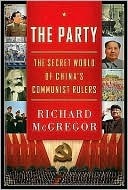This era ended in one of the central government’s periodic panics about its waning authority in the provinces. The policy cycles follow a familiar pattern, the Chinese economists say: ‘Decentralization leads to disorder; disorder leads to centralization; centralization leads to stagnation and stagnation leads to decentralization.’ The turning point in the current cycle in the early nineties was Beijing’s alarm at the collapse in its share of national tax revenues, to just over 20 per cent, about half the level of fifteen years earlier. The introduction of a new tax policy that year ensured
...more
Welcome back. Just a moment while we sign you in to your Goodreads account.


